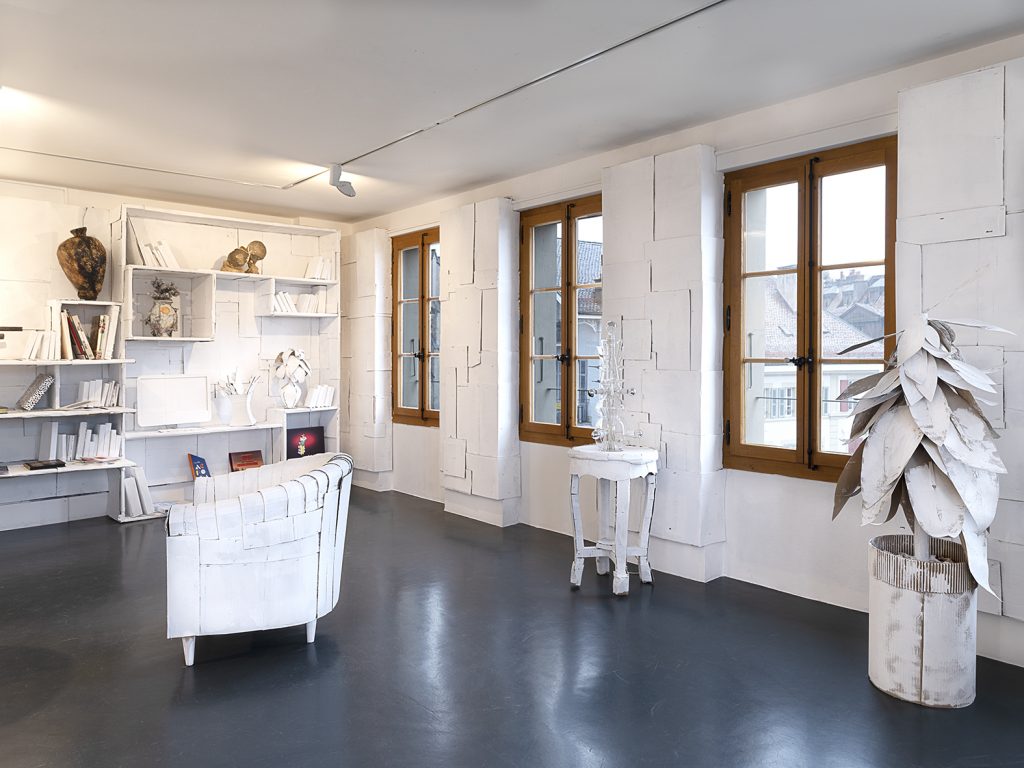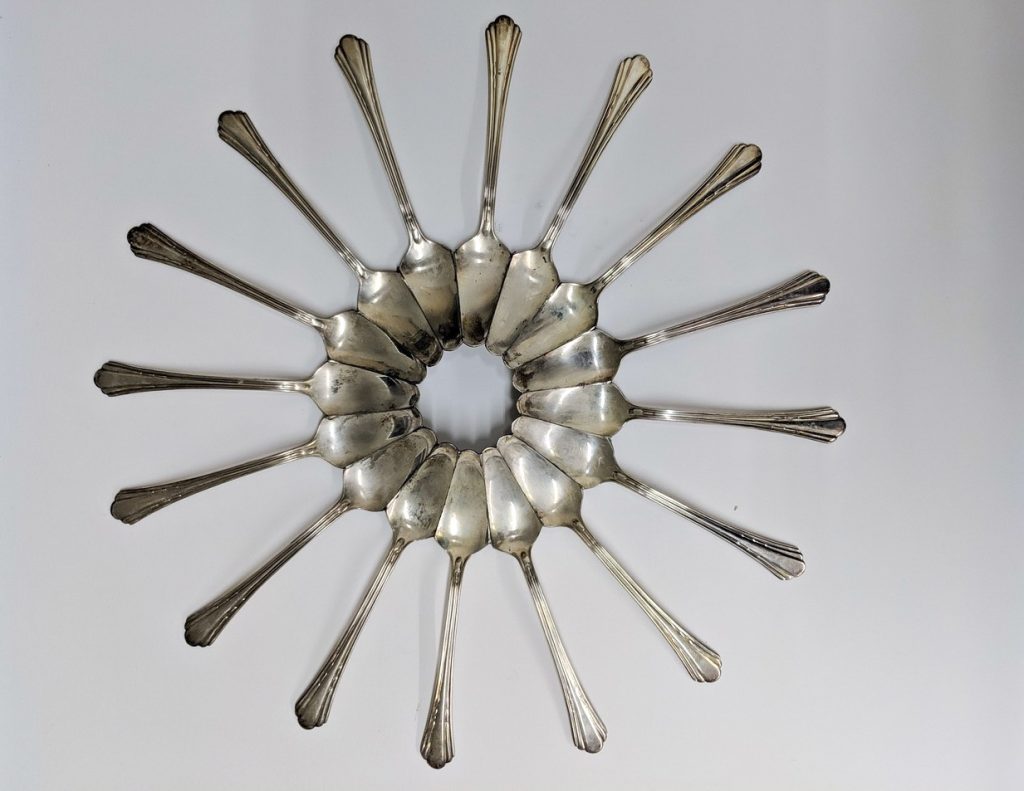
Mudac’s Re-evaluation of the Ordinary
For their final exhibition in their original location, mudac’s curators have teamed up to pay tribute to ‘their’ Guadard house by highlighting the most ordinary — and thus extraordinary — objects they have collected over the last twenty years.
Since its opening in 2000, the mudac – Museum of Contemporary Design and Applied Arts – in Lausanne has built up a reputation for having an inquisitive and incisive attitude to the everyday things that shape our way of life. In their last exhibition ‘Extraordinary!’ (which has been extended due to the COVID-19 lockdown) the museum honours this reputation as well as the place that they’ve called home for the last twenty years. Each gallery taking on the role of a room in the house library, kitchen, dining room, bedroom, game room, music room, bathroom and basement. Its “ordinary” objects — amongst which a lamp made from soap bubbles, a necklace of belladonna seeds, a dress hand-woven out of brass, and a taxidermy rabbit turned inside out — have been cleverly reimagined by designers and artists. Be it too large, too small, comical, bestial, vegetal, subtle, disturbing or even magical — pieces from the museum’s collection are joined by works on loan to form an immersive experience that blends fiction and reality all the while blurring the border that separates art and design.
The household setting, which was a conscious choice implemented before COVID-19, has received a new relevance in today’s setting — and was designed by Sébastien Guenot. Seeing the exhibition as a narrative and theatrical reinterpretation of the stories of the Gaudard house’s various inhabitants, Guenot imagines the house as being inhabited by spirits who watch over each of the eight exhibition galleries. The spirits are given visual form by illustrator Albertine and verbal expression by writer Germano Zullo. The spirits’ voices can also be heard throughout the museum via audio installations by sound designer Jérôme Nussbaum. Seeking them out will take visitors into less frequented parts of the museum in a final exploration of a building that has housed over one hundred exhibitions.
Built-up from recycled cardboard, the exhibition’s design not only represents imagination and childhood crafts — but also evokes mudac’s upcoming move: as if the museum was already packing up. The contrast between the false appearance of an ordinary house with the highly unusual nature of the objects on display highlights what makes the objects truly extra-ordinary — spurring a broader reflection on what is usual and what is unusual, normal and exceptional, feminine and masculine, familiar and strange. They can also reflect on how the exhibited works relate to recurring themes in contemporary art and design, such as life, emotion, provocation, violence, utility, re-appropriation, illusion and ties to the past. In so doing, it sends visitors on a re-reckoning of their own: one that they can share by participating in the museum’s “What’s Your Extraordinary Object?” challenge on their Instagram account.
mudac’s ‘Extraordinary!’ exhibition will be on view until Sunday, August 30th 2020. In 2022, mudac will move into a new building at the PLATEFORME 10 site near Lausanne’s train station.
Cover Photo: Mona Hatoum / Britain and Palestine, lives and works in London. “Grater Divide”, 2002. Sculpture, mild steel, 204 x variable width and depth. Mona Hatoum explores questions of the human condition. Fragility, vulnerability and threat experienced through displacement, exile or power structures are ever-present in her work. This room divider is part of a series of household objects Hatoum has enlarged and made into sculptures, in this case, a giant grater so massive it becomes menacing. Once a functional object, now it literally cuts through space – a terrifying, uncanny barrier. Image © Mona Hatoum. Courtesy White Cube © Iain Dickens.
















